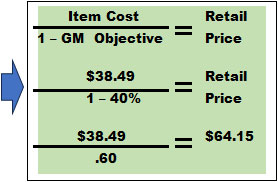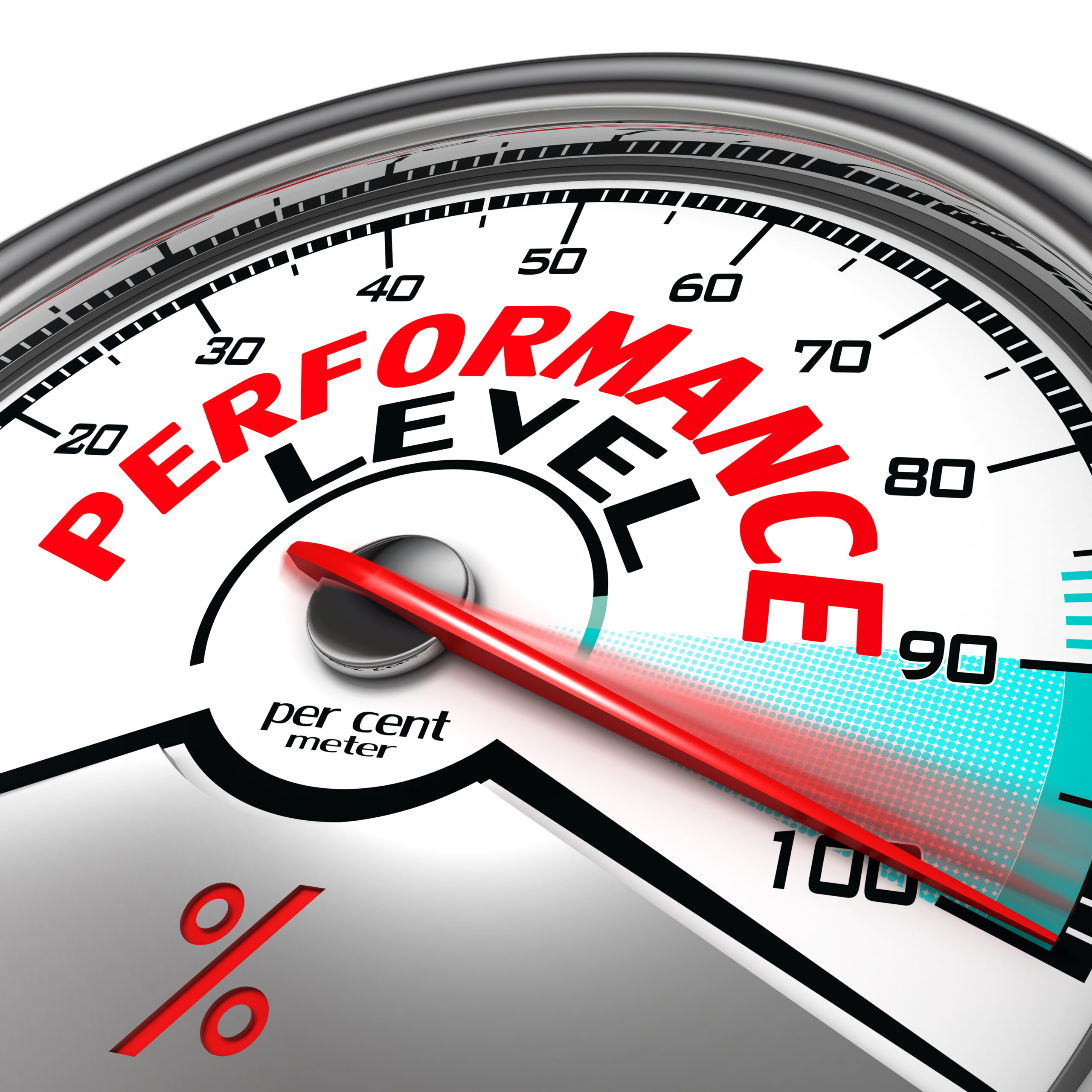It wasn’t long ago: Parts “managers” were super parts countermen, chasing down parts, answering phones, scrambling to help impatient technicians, servicing even more impatient counter customers, and trying to respond to their manager who wanted to know why the UPS shipments from last week had not been put away yet.
Fortunately, today most dealer owners have recognized the crucial value of a successful parts operation. Dealer Principals understand how parts plays an integral role in supporting overall dealer growth, profitability, market share, and customer relations. Most importantly, today these owners are making essential investments in adequate staff that has competent, well-trained people with a well-designed user-friendly management information system.
From a financial perspective, we must look at two primary drivers of success in your parts business: profitability and sales volume.
Improving Profitability – Strengthening Margins
Pricing Strategy is the key to profitability. Pricing is an art as well as a science. With just a little attention, you can dramatically improve your overall gross profit contribution in your parts business.
First, start by making a close examination of your parts inventory. Which 300 parts line items are making you the most money? Develop this simple analysis for parts line item sales over the past 12 months. Call it your Gross Profit Margin Contribution Analysis.
Rank the line items by YTD $ Gross Profit. Identify the top 300. These are your big winners.

| Line Item Part Description | Unit Sales | Unit Cost Price | Unit Sell Price | YTD $ Sales | YTD $ Gross Profit | Gross Profit Margin % |
Next, get 4 different color highlighters. Indicate which category each part falls into:
- Proprietary
These are parts only available from your OEM.
Pricing Strategy: Be aggressive, but don’t be more than 8% above comparable items from a competitor. If their proprietary starter motor is $386.81, you can’t be $763.00.
- Competitive
Parts available from many sources: seats, undercarriage, tires, throttle cables, backhoe pins and bushings, cab glass, etc.
Pricing Strategy: Monitor competitive parts pricing. If your current price is $39.05, make it $39.97. close enough but you pick up almost another $1.00 in gross profit.
- Impulse
Tools, flashlights, boots: items customers buy if they like them when visiting the dealership.
Pricing Strategy: If you have visual merchandising displays, price every item. Keep the display fresh and clean. These should be mostly at least 40% gross profit margin items.
- Commodity
Filters: parts everyone knows the price. Available everywhere.
Pricing Strategy: You shouldn’t be higher than leading local dealers.
Dedicate time to sit down with the Gross Profit Margin Contribution Analysis printout. Study each of the 300 top items. Make sure you understand the market environment for each item. Check the ones you want to investigate further and work on that list over the next several weeks.
Study your market. Visit competitive dealerships. Visit big dealerships such as Kenworth and Ditch Witch that specialize in parts marketing and visual merchandising. Call competitors and check pricing on Proprietary and Competitive parts.
Improving Profitability – Strengthening Margins
Use the correct formula to calculate retail price from gross profit margin objective

- For each item, can you get 1-3% or higher sell price?
- Can you reduce item cost by 2-3% by better purchasing procedures?
- Can you minimize inbound freight through more stock orders?
- Can you avoid lost sales for these high-profit contribution items with a better stocking strategy?
Improving Sales Volume – Increasing Velocity of Parts Orders
These are the parts business development ideas that I have seen work best:
- A highly successful model for parts marketing and sales is Kenworth Truck Company. For over 50 years they have been perfecting parts promotions, first with mailing dealer weekly fliers, and, more recently weekly e-promotions.
In order to build the image of the dealer as a low-cost / high-service business, they build pricing strategies into their weekly fliers. For example, there is a Canadian heavy-duty truck dealer in the Maritimes who would select one or two competitive parts items such as a Donaldson exhaust muffler. The monthly special would offer this part at the landed dealer cost. Customers were astonished at the low price and this simple promotion built up in their mind the image of a dealership that was expert in merchandising, and offered fantastic prices and premium service.
But, to do this you must have all customer email addresses and a competent person to put together your weekly, bi-monthly, or monthly flier. This type of promotion is a really big opportunity and you should surely build expertise in that area if you want to build parts sales volume. Don’t just send out fliers on machinery whole goods sales. Promote your most profitable businesses—your parts and service.
We know from recent research by Winsby, Inc., that once a dealer has complete customer emails and begins email promotions, dealers formerly at a sales growth rate of 5-10% per year are now at a 20% – 40% sales growth rate.
- The second big source of incremental parts sales is a Scheduled Maintenance/PM Program for your primary line(s). Not only do you get 2nd segment parts sales at full margin, but you build a closer relationship with the customer.
These customers will call your dealership first anytime they need anything. And, we know that customers under PM Contracts will spend 7x more than an identical customer across time with the same equipment utilization who is not under a PM agreement. This fix-before-fail strategy is good for everyone.
If you’re not ready for a formal PM Program, work with your Service Manager to formalize machine inspection procedures. On every maintenance job, the technician should conduct a formal machine safety and performance inspection. These formal inspections generate 2nd segment work and parts sales at full margins and consistent machine inspection procedures should be standard practice. - Collaborative promotions with your Service Department are often an overlooked business development opportunity. What about winter reconditioning? What type of seasonal promotions could you run in your area? Promotion doesn’t necessarily mean a lower price. It’s just your big seasonal promotion!
- Your 20 largest parts customers deserve special treatment. Go visit them in person at least once every six months. Find out what they need that you are not stocking. Find out if a consignment program would be of benefit. Ask how responsive your dealership is to their needs. Probe as to what your dealership can do to improve their machine uptime and provide better overall product support. For greater impact and stronger bonds with customers, make these calls with your Service Manager.
- Add-on parts counter sales are easy to do. “Add-on sales results are big: 1 in 4 (or 5) customers actually buy more if asked. Dealers who implement this are able to achieve a 10% incremental increase in the average parts order.
- Say “Yes.” Parts people should say “YES! It’s a non-stock item, but I can get it for you.”
Just keep in mind, not only do you have to build your parts business, you need to manage it:
- Keep an eye on obsolescence. Don’t let customers order special non-stock items without prepayment. Keep obsolescence under 10%. Exclude protected items for new machinery models from the obsolete category.

- Keep your inventory turns in balance with off-shelf fill rates to Service. You must do both to be successful. Achieving 4.5 turns with a 97% off-shelf fill rate to Service for your primary line(s) is where the best dealers are today.
If you would like more creative ideas on improving your operations, check out my recent publication, 25 Profit Building Ideas for Machinery Dealers. It’s on sale today on our website for only US$72.00 with free shipping.
If you would like to discuss any of these topics, just send me a note: walt@mcdonaldgroupinc.com. It would be good to hear from you.
# # # #
The McDonald Group, Inc.
P.O. Box 730, Arlington Heights, IL 60006 • 847/340-5518
walt@McDonaldGroupInc.com • www. McDonaldGroupInc.com
THE GLOBAL LEADER IN DEALER DEVELOPMENT

